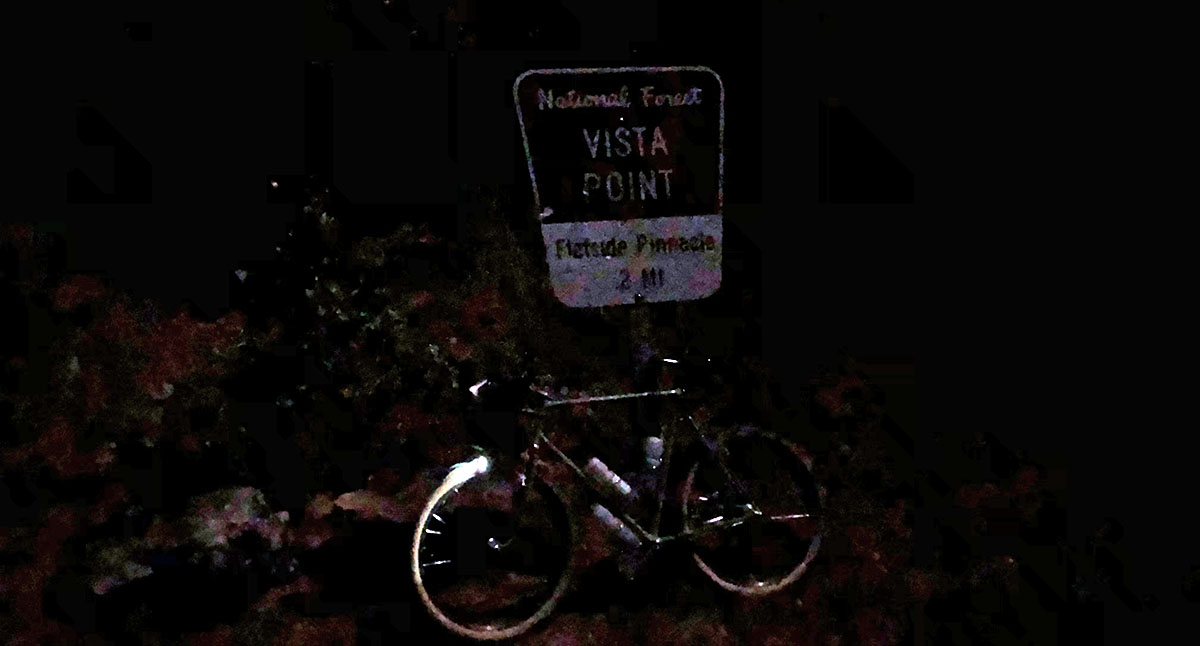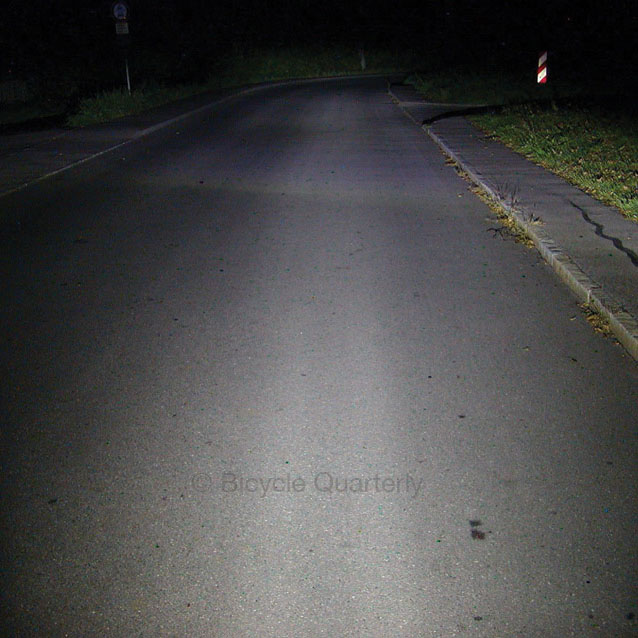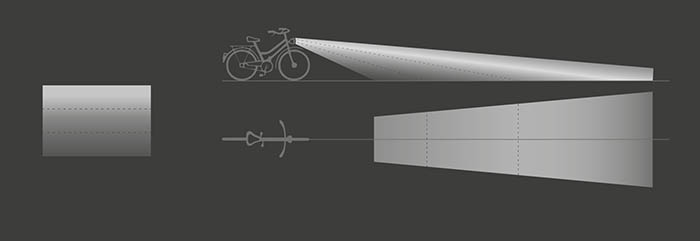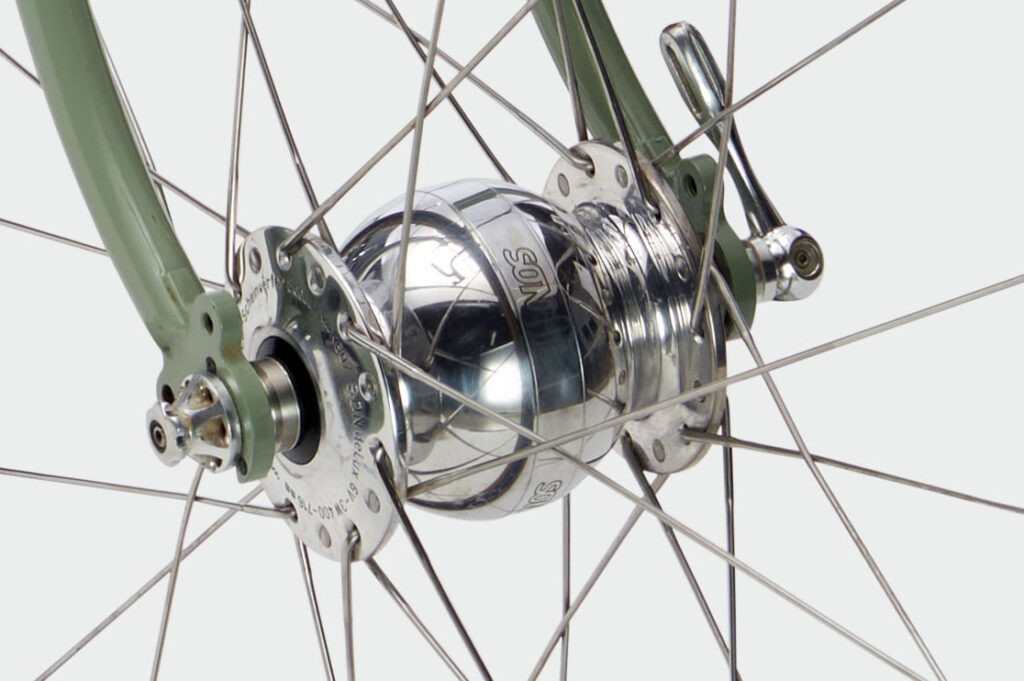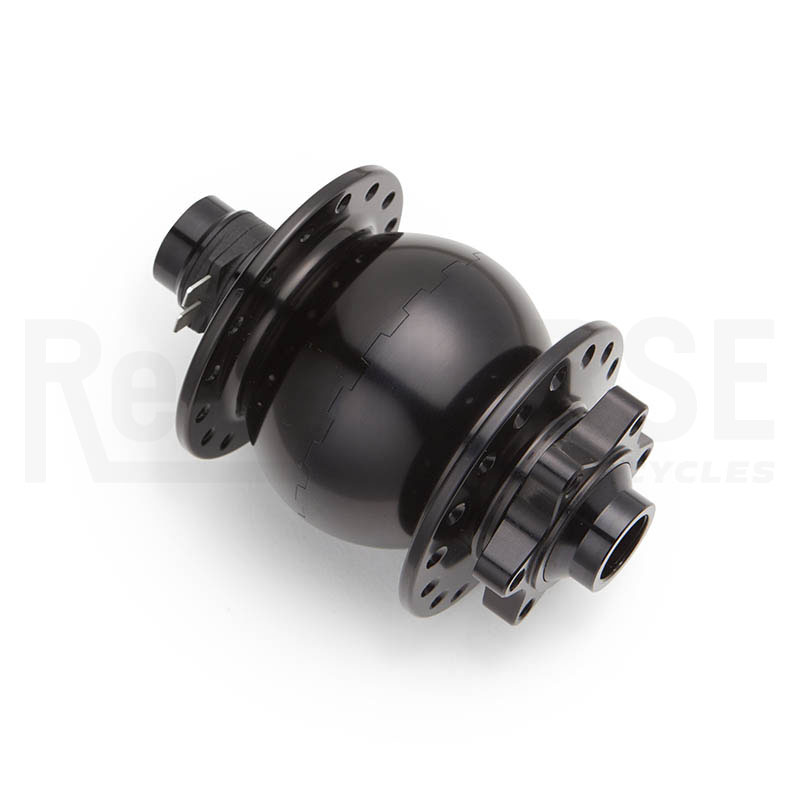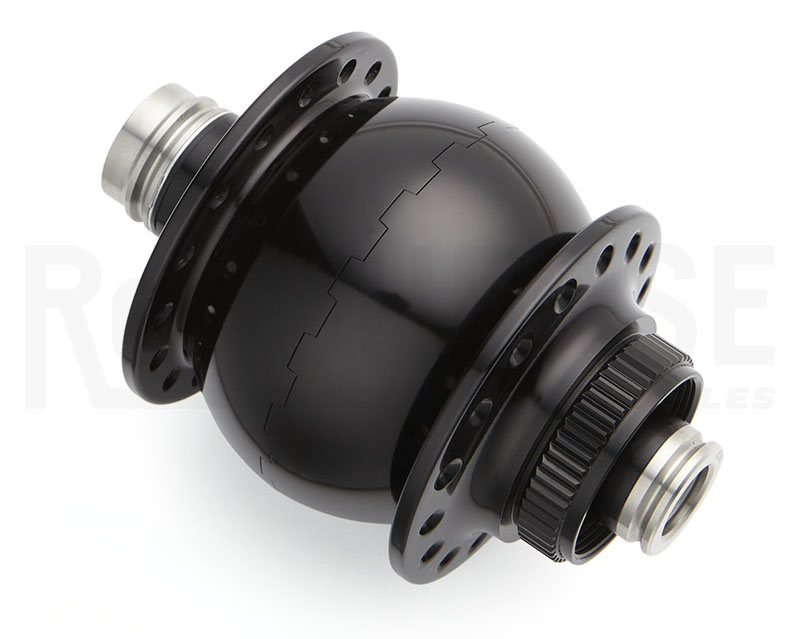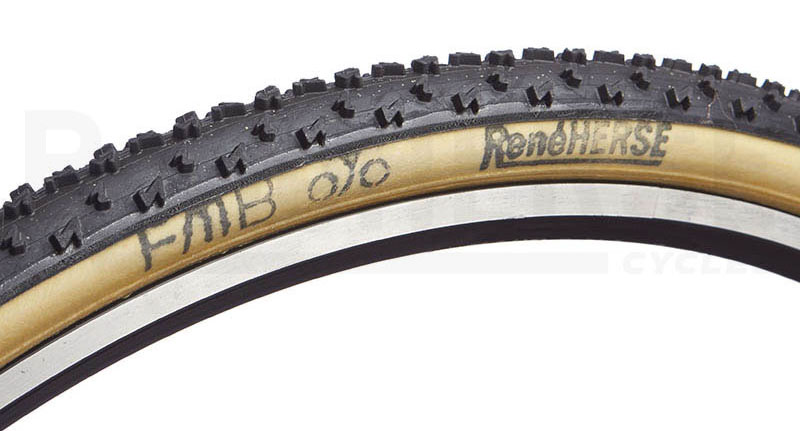New SON Hubs and Restocks
During the Arkansas High Country Race, my most memorable—and fun—riding was at night. As it turned out, I rode the roughest and most technical sections of the course in the dark. What surprised me was that I found riding gravel easier at night than during the day. Here’s why: During the day, as the autumn sunlight filtered through the trees, it painted a beautiful pattern of light and shade onto the gravel surface. Komorebi, it’s called in Japanese. It’s lovely to look at, but potholes and other irregularities can be hard to see on the dappled surface. In a way, komorebi is camouflage for potholes.
At night, there’s no such problem—if you have a good headlight. Anybody who has driven a modern car at night knows what a layered beam does: It illuminates the road surface evenly, without bright and dark spots. A layered beam is what you want anytime you need to see further than 50 feet (15 m) in front of your bike. And descending bumpy gravel roads in Arkansas at 35+ mph (60 km/h), you need to see as far ahead as you can!
It’s easy to get dazzled by how many lumens a light puts out, but that doesn’t tell you much about how well that light illuminates the road ahead. If your light has a simple round beam, all that light falls onto a spot that’s just a few meters in front of the bike. Your eyes adjust to the bright spot right in front of you, and it becomes difficult to see further into the distance. You’re peering through a fog of brightness, trying to see the dark road surface beyond. This is bad enough on pavement, but on gravel the benefits of a layered beam are even greater. (There’s a reason car headlights are not super-bright LEDs with a simple round reflector.)
What the layered beam does is simple in theory: It puts more light into the distance, where the beam hits the road at a shallower angle. This means the road surface is illuminated evenly, and you can see far into the distance. The beam also is cut off at the top, so no light is wasted by illuminating the sky—important when your legs power the light—and oncoming traffic doesn’t get blinded.
Layered beams are simple in theory, but they require very sophisticated optics. Developing such a light with its complex reflector is hugely expensive. What’s why most bike lights use simple optics with round beams. The Edelux II headlight is an exception: Its beam pattern is shown in the drawing above. The LED actually shines backward into the light, onto the reflector that then projects the precisely shaped beam onto the surface. It’s important that the LED is mounted with precision, so the reflector works exactly as it’s designed to do. The Edelux has an aluminum housing that keeps the LED cool, which is essential for optimum light output. A lot goes into what looks like a simple headlight. You’ll notice the difference as soon as it gets dark on your first ride with one of these lights.
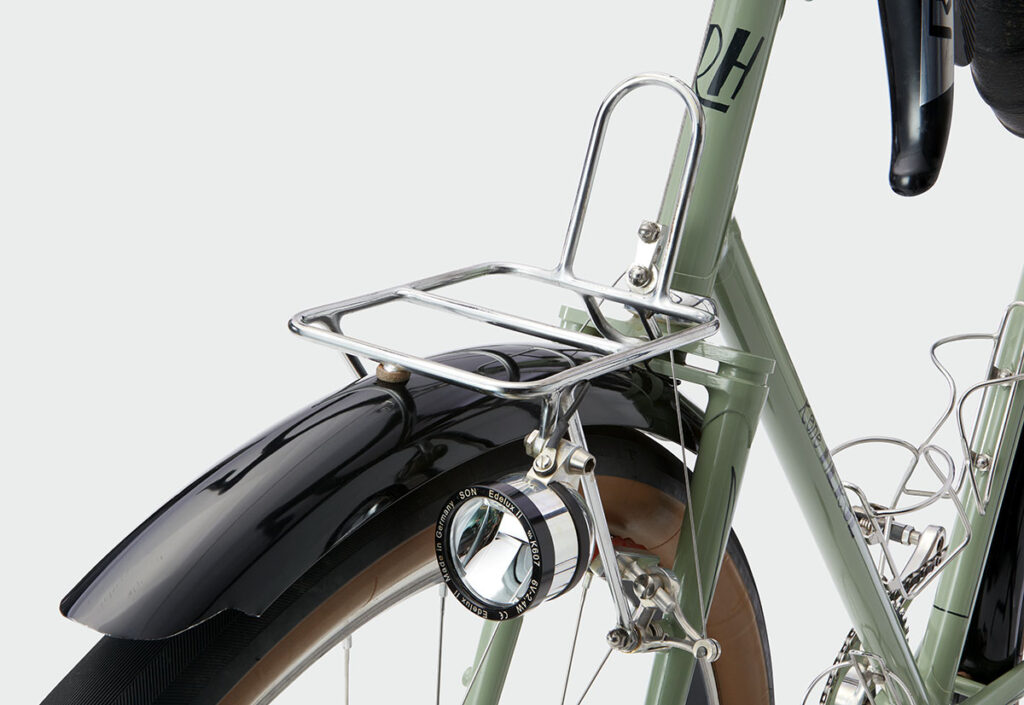
Mounting the light low further increases the definition of potholes and other irregularities. In fact, the position of the lights on our racks is the result of a lot of testing to make sure the front wheel doesn’t cast a shadow. Otherwise, when you turn right, your path is in the shadow of the tire, and you can’t see where you are going. Here at Rene Herse Cycles, we take bicycle lights seriously, because we love riding in events like Paris-Brest-Paris and the Arkansas High Country Race. And the experience from those events has gone into improving these lights and generator hubs in close collaboration with our friends at Schmidt Maschinenbau in Germany.
Generator hubs used to be found mostly on bikes of randonneurs and commuters, but that’s changed. These days, most bikepacking racers use generator hubs because they don’t want to worry about charging their lights. Compared to a GPS unit, lights use considerably more power. Carrying enough backup power for a multi-day event would be difficult, but charging your lights means you’re spending down time off the bike when you want to be riding. With a generator hub, you always have light, at the turn of a switch.
Schmidt Maschinenbau in Germany makes the world’s best generator hubs, with the lowest resistance and a clever pressure compensating system that prevents moisture from getting sucked through the bearings every time the temperature changes. (There’s a lot of air volume inside a generator hub, which expands and contracts as it gets warmer or colder.)
Schmidt have been working hard to keep up with all the new standards, so that you can get a generator hubs for your bikepacking or gravel bike, no matter what fork and brake spec you run. Whether 12 mm or 15 mm thru-axles, 100 mm or 110 mm Boost spacing, Centerloc or 6-bolt rotors—we’ve got a hub for you. We just received the latest models, and all versions are in stock.
SON offers two models, the Delux and the SON 28. The Delux has the lowest resistance and weight, whereas the SON 28 puts out more power. I run the Delux on my bikes, since I don’t bother with charging electronics on the bike. Even at walking speeds—and yes, I did walk some extremely loose and steep sections during the Arkansas High Country Race—it puts out enough light to see where you are going.
We recommend the SON 28 for mountain bikes that are ridden in rough terrain, where you need more light at lower speeds—or if you want to charge devices while riding at those relatively low speeds. Either hub is a great choice and has all the features that make SON hubs so smooth-rolling, efficient and durable.
Speaking of restocks, we also received another shipment of the wonderful FMB tubular tires, both for road and cyclocross. They are hand-made in France with cotton or silk casings. These are the tubulars that pros buy with their own money for the most important races—they are simply the best. If you love tubulars, we don’t need to tell you why they are wonderful. For those who are wondering what we’re talking about: With tubulars, the entire tire can flex, since it sits on top of the rim. That results an extremely supple ride even with relatively narrow tires. A 27 mm tubular absorbs shocks like a 31 mm clincher, but otherwise it still feels like a 27 mm tire. Is that worth the hassle of having to glue your tires to your rims? That’s for each rider to decide…
More Information:


